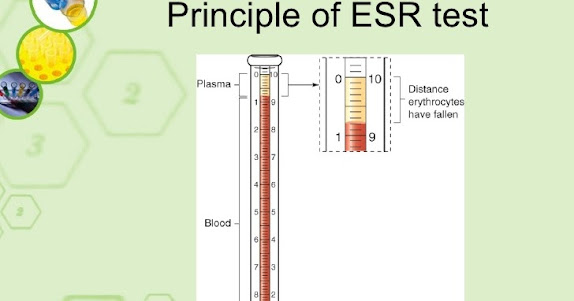Microscopy: particularly useful for bacteria identification.
Blood analysis (serology, blood culture etc): identification of microorganisms in blood.
Pharyngeal/nasal exudate, sputum, ocular/otic secretions: collection of biological samples for microbiological examination.
Urinalysis: first morning urine, from the intermediate jet, after local toilet. Important tool for microorganism presence identification.
Coproparasitological examination, coproculture, from faeces.
Vaginal, urethral, vulvo-vaginal secretion examinations (exudates etc)
Various smears with specific colourings - microscopical examinations of morphology.
Various molecular genetics techniques for virus identification: RT-PCR, ELISA, Western-Blot, immunological techniques (immunochromatography, immunodifusion, immunofluorescence) etc.
LABORATORY DIAGNOSIS FOR VIRUSES:
- virus isolation on cell cultures
- viral genome highlighting by gene amplification reaction after reverse transcription (Real-Time Polymerase Chain Reaction - RT-PCR) - frequently used due to high precision
- serological identification - immunochromatography techniques (rapid tests), ELISA, Western Blot etc.
CULTIVATION OF VIRUSES:
Viruses have obligatory intracellular parasitism, hence they do not grow on artificial environment/mediums. They can only be cultivated on live substrates:
- laboratory animals - limited use nowadays due to spreading of cell culture usage popularity;
- embryonated chicken egg - offer embryonic tissue for viruses culturing; important in vaccine preparation;
- cell cultures - the mostly used virus-host system in virology research.
Example: Poliomyelitis:
- indicated collection of pharyngeal exudate, blood, faeces, cerebrospinal fluid;
- isolation of virus on cell cultures; RT-PCR.
CULTIVATION OF BACTERIA ON MEDIA CULTURE:
Microscopical examination: first step to bacteria identification. Main elements to establish bacteria identity:
- cilia
- capsule
- endospores.
Morphological examination: on microscopic preparations, fixed and coloured: smears.
Smears: obtained by spreading a bacterial colony on a clean and degreased blade, which will be dried, fixed and coloured, for examination under a microscope.
Culture media - provides nutrients and physico-chemical conditions for bacteria growth;
Sowing - contact of pathological product with the culture medium;
Isolation - single colony transition to other culture medium => pure culture.
MEDIUMS:
Physical classification:
- solid - reflecting colour, diameter, appearance, media adherence etc;
- liquid - turbidity and turbidity type, surface/bottom film/deposit formation.
Examples: homogeneous turbidity - S. aureus; surface film - Vibrio cholerae, bottom deposit - Streptococcus pyogenes.
In terms of composition, media can be:
- simple - simple agar;
- composed - besides the basics, also organic substances (serum, blood) required for special growth care; example: blood agar;
- special mediums - isolation, enrichment, differential.
BACTERIA CLASSIFICATION:
1. Tinctorial affinity to Gram staining (most important staining, dividing bacteria in Gram-positives - lilac and Gram-negatives - red):
a) Gram-positives: Streptococcus pneumoniae, Staphylococcus aureus;
b) Gram-negatives: Neisseria gonorrhoeae and meningitidis, Escherichia coli, Helicobacter pylori, Haemophilus influenzae. The Enterobacteriacee family - large number of Gram-negative bacillus species living in the intestines; the most important genre it includes are: Escherichia, Shigella, Salmonella, Klebsiella, Proteus. Enterobacteria classification according to the fermentation capacity of lactose:
- Pathogenic Enterobacteria: lactose-negative: Salmonella, Shigella;
- Conditioned-pathogenic or non-pathogenic enterobacteria:
a) lactose-positive: Escherichia, Klebsiella
b) lactose-negative: Proteus.
2. Need for oxygen:
a) aerobic bacteria: Staphylococcus aureus;
b) anaerobic bacteria: Clostridium botulinum.
3. Glucose fermentation capacity:
a) glucose-fermentative bacteria: Vibrio cholerae;
b) glucose-nonfermentative bacteria: Pseudomonas aeruginosa.
4. Pathogenicity classification:
a) nonpathogen bacteria: suboptimal conditions inside human host
b) pathogenic bacteria: always causing illness; example: Treponema pallidum.
c) conditionate pathogenic bacteria: from normal flora, causing illness in various conditions.
EXAMPLES OF AGARS AND COLORATIONS FREQUENTLY USED IN MICROBIOLOGY FOR BACTERIA IDENTIFICATION:
- MacConkey Agar: selective and differential culture medium for bacteria. Isolates Gram-negative and enteric bacteria. Differentiates them based on lactose fermentation. Lactose fermenters turn red or pink, non-fermenters do not change colour.
- Kligler's Iron Agar: Enterobacteriaceae identification, based on double sugar fermentation and hydrogen sulphide production.
- Ziehl-Neelsen stain: acid-fast stain identifying acid-fast organisms, mainly Mycobacteria (Nocardia as well). Acid-fast bacilli are bright red after staining.
- Voges-Proskauer test: detects acetoin in a bacterial broth culture. Red: positive, yellow-brown: negative. Principle: digestion of glucose to acetylmethylcarbinol.
- BD CLED Agar: CLED: Cystine-Lactose-Electrolyte-Deficient; differential culture medium for bacteria in urine; supports pathogen growth but prevents Proteus species accumulation due to the lack of electrolytes.
DIAGNOSIS OF PARASITES:
- Coproparasitology: - faeces examination for parasites;
- ELISA;
- Direct agglutinations to detect IgM antibodies;
- Blood culture; cerebrospinal fluid examination for parasites;
- Smear and thick drop examination of peripheral blood; May-Grumwald-Giemsa staining;
- Immunological examination: ELISA, hemagglutination; latex agglutinations.
- Parasites/parasite eggs identification in faeces and other material through microscopical examination.
- Macroscopical examination of faeces for parasite and/or parasite eggs elimination;
MICOLOGICAL DIAGNOSIS:
- based on the clinical lesion's aspect and microscopic analysis results of hairs and squamous material collected from lesions.








